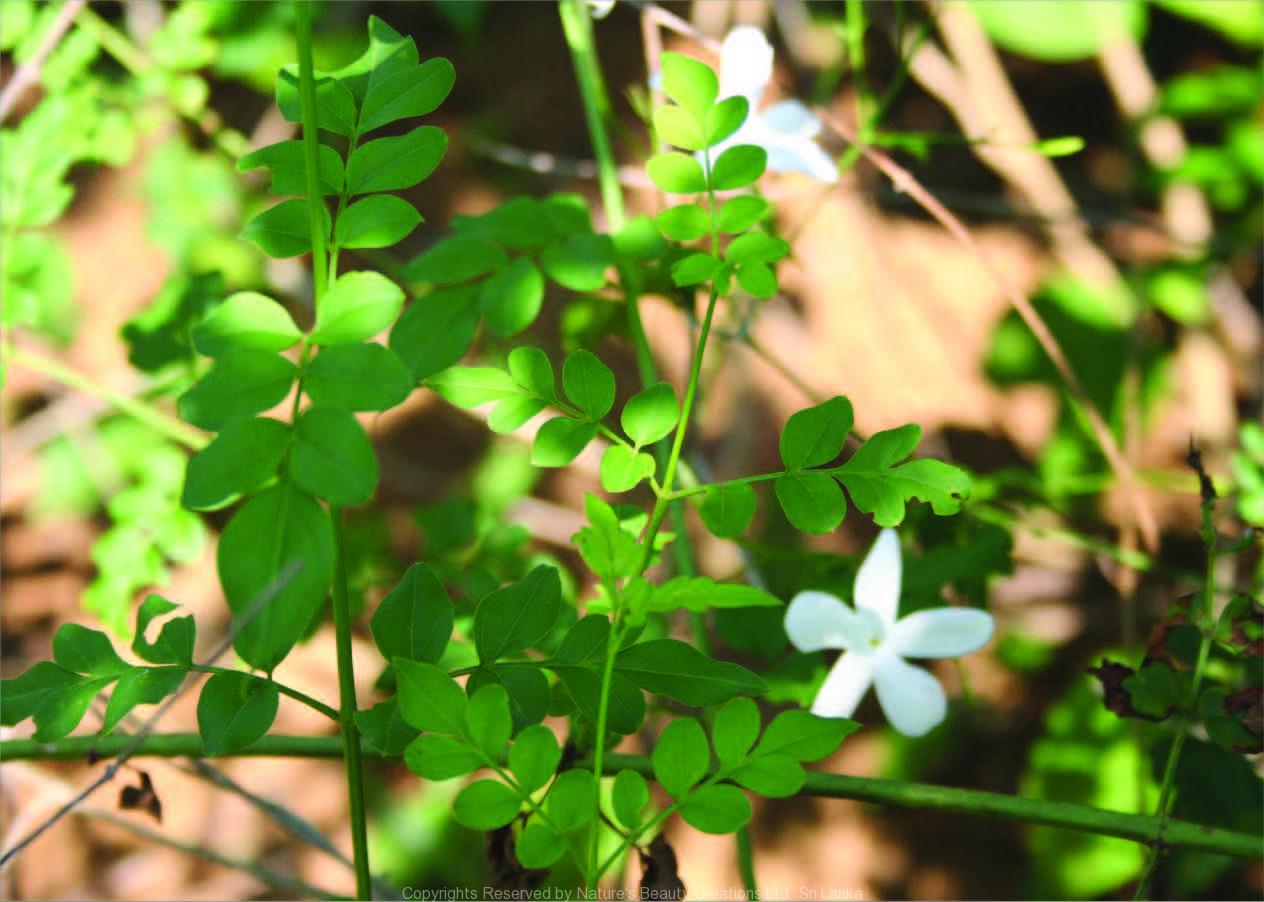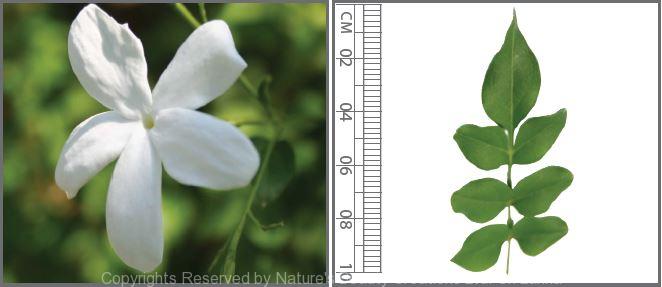

Traditional Knowledge
Useful plant parts :
Leaf and flower bud
Uses in traditional medicine :
- Decoction of leaves is used as a mouthwash for ulcers in gums
- Eye wash prepared by dipping fresh flower buds in water for 12 hours and heating for 5 minutes, is used to protect eyes from viral diseases
- Used for skin diseases and toothache
Scientific Research
Chemical constituents:
Secoiridoid glucosides: 2”-epifraxamoside and demethyl-2”-epifraxamoside and secoiridoid: jasminanhydride, phenoldic compound: oleacein and oligomeric, iridoid-type compounds: sambacein I-III from aerial parts
Bioactivity :
Alcohol extract of leaves: antiulcer, anti-inflammatory, antioxidative; ethanol extract of flowers: wound healing, chemopreventive; ethanol extract of callus: antimicrobial; hydrodicoholic extract of leaves: anticonvulsant, antinociceptive
Clinical:
References : Chaturvedi, A. P. et al., (2012), Efficacy of Jasminum grandiflorum L. leaf extract on dermal wound healing in rats, Int Wound J. Chaturvedi, A. P. and Tripathi, Y. B., (2011), Methanolic extract of leaves of Jasminum grandiflorum Linn modulates oxidative stress and inflamma- tory mediators, Inflammopharmacol, 19, 273-281. Divakar, N. G. et al., (1979), Indole oxygenase from the leaves of Jasminum grandiflorum, Plant Science Letters, 15(2), 177-181. Gupta, R. K. and Reddy, P. S., (2013) Antinociceptive and anticonvul- sant activities of hydroalcoholic extract of Jasminum grandiflorum (jasmine) leaves in experimental animals, Pharmacognosy Res, 5(4), 286-90. Kolanjiappan, K. and Manoharan, S., (2005), Chemopreventive efficacy and anti-lipid peroxidative potential of Jasminum grandiflorum Linn. on 7,12 dimethylbenz(a)anthracene-induced rat mammary carcinogenesis, Fundamental & Clinical Pharmacology, 19, 687-693. Nagarajappa, R. et al., (2013) Antimicrobial Effect of Jasminum grandiflorum L. and Hibiscus rosa-sinensis L. Extracts Against Pathogenic Oral Microorganisms – An In Vitro Comparative Study, Oral Health Prev Dent. Nayak, B. S. and Mohan, K., (2007), Influence of Ethanolic Extract of Jasminum grandflorum Linn Flower on Wound Healing Activity in Rats, Indian Journal of Physiology and Pharmacology, 51(2), 189-194. Sadhu, S. K. et al., (2007), Secoiridoid components from Jasminum grandiflorum, Phytochemistry, 68, 1718-1721. Somanadhan, B. et al., (1998), Angiotensin Converting Enzyme Inhibitors from Jasminum azoricum and Jasminum grandiflorum, Planta Med, 64(3), 246-250. Umamaheswari, M. et al., (2007), Antiulcer and in vitro antioxidant activities of Jasminum grandiflorum L., Journal of Ethnopharmacology, 110, 464-470.
Copyrights Reserved By
Natures Beauty Creations



